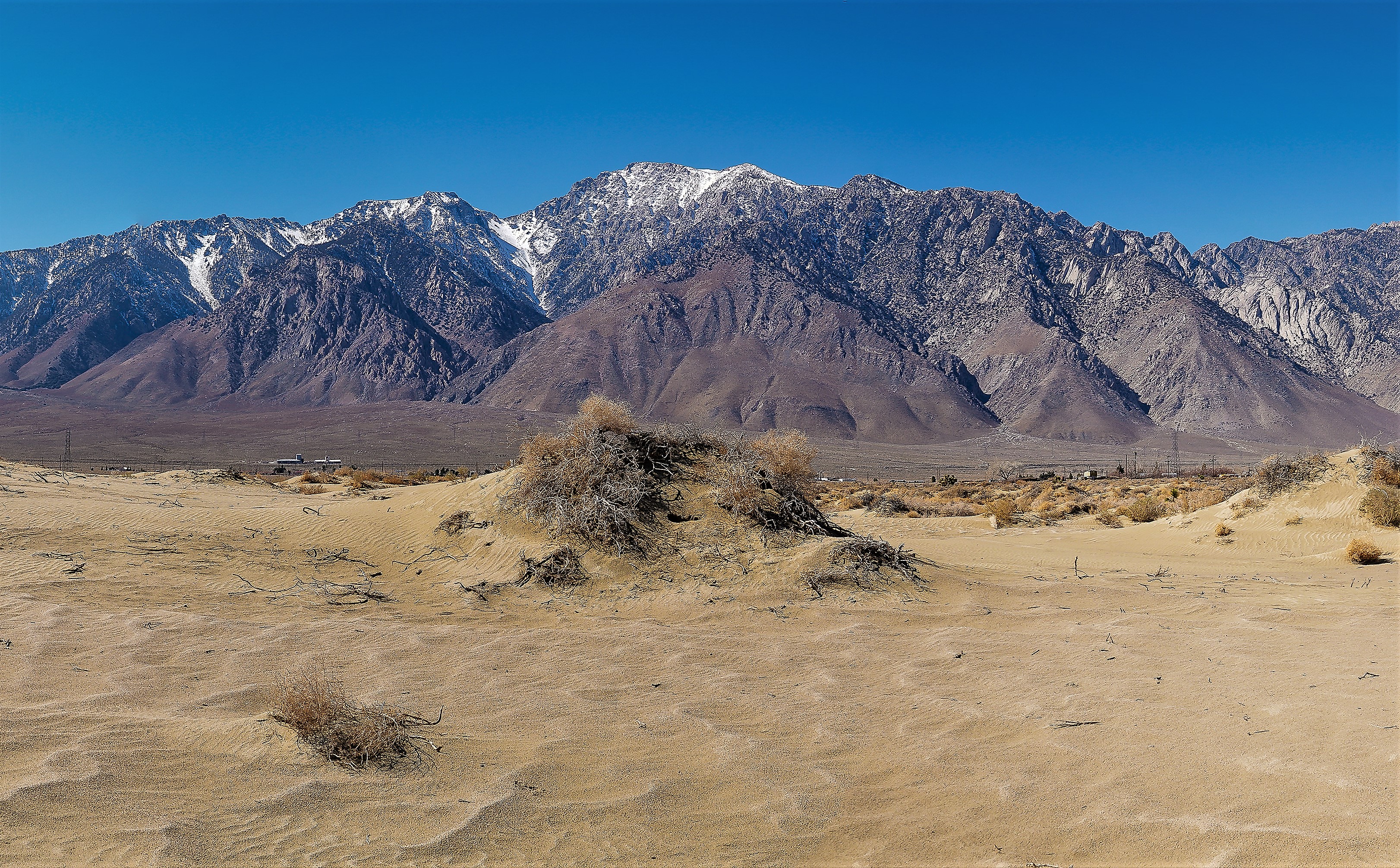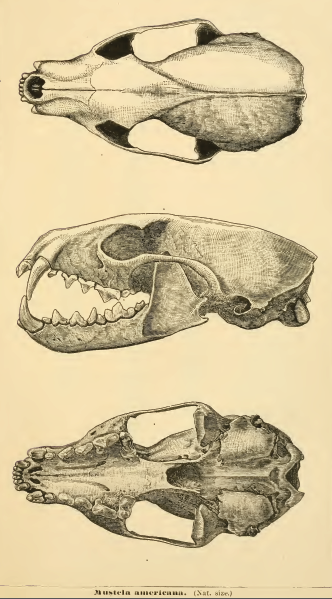|
Golden Trout Wilderness
The Golden Trout Wilderness is a federally designated wilderness area in the Sierra Nevada, in Tulare County and Inyo County, California. It is located east of Porterville within Inyo National Forest and Sequoia National Forest. It is in size and was created by the US Congress in 1978 as part of the National Wilderness Preservation System. The wilderness is managed by the U.S. Forest Service. The wilderness is named for and protects the habitat of California's state freshwater fish, the golden trout. Elevations range from about to . Within the wilderness are portions of the Kern Plateau, the Great Western Divide's southern extension, and the main stem of the Kern River, the South Fork of the Kern and the Little Kern River. The wilderness area is bordered on the northeast and northwest by the high peaks of the southern Sierra Nevada. Cirque Peak is the high point at . Kern Plateau The Kern Plateau is a large tableland with sprawling meadows, narrow grasslands alon ... [...More Info...] [...Related Items...] OR: [Wikipedia] [Google] [Baidu] |
Tulare County, California
Tulare County ( ) is a County (United States), county located in the U.S. state of California. As of the 2010 United States Census, 2020 census, the population was 473,117. The county seat is Visalia, California, Visalia. The county is named for Tulare Lake, once the largest freshwater lake west of the Great Lakes. Drained for agricultural development, the site is now in Kings County, California, Kings County, which was created in 1893 from the western portion of the formerly larger Tulare County. Tulare County comprises the Visalia-Porterville, California, Porterville, CA Metropolitan Statistical Area. The county is located south of Fresno, California, Fresno, spanning from the San Joaquin Valley east to the Sierra Nevada. Sequoia National Park is located in the county, as is part of Kings Canyon National Park, in its northeast corner (shared with Fresno County, California, Fresno County), and part of Mount Whitney, on its eastern border (shared with Inyo County, California, Iny ... [...More Info...] [...Related Items...] OR: [Wikipedia] [Google] [Baidu] |
Olancha Peak
Olancha Peak is a mountain in the Sierra Nevada of California. It rises to an elevation of on the Tulare-Inyo county line in the South Sierra Wilderness. It takes its name from the nearby town of Olancha. The mountain is also known as "Indianhead" and "the Sleeping Maiden", as some think that parts of the ridgeline of the southern slope of the mountain, when viewed from certain angles, resembles either the face of a man or the figure of a woman lying on her back. The peak is one of the highest in the Sierra Nevada south of Mount Whitney. It is the southernmost peak that is significantly above treeline on the Sierra Nevada escarpment An escarpment is a steep slope or long cliff that forms as a result of faulting or erosion and separates two relatively level areas having different elevations. The terms ''scarp'' and ''scarp face'' are often used interchangeably with ''esca .... Due to the high elevation, most of the precipitation the mountain receives consists of snow. ... [...More Info...] [...Related Items...] OR: [Wikipedia] [Google] [Baidu] |
American Black Bear
The American black bear (''Ursus americanus''), also called simply a black bear or sometimes a baribal, is a medium-sized bear endemic to North America. It is the continent's smallest and most widely distributed bear species. American black bears are omnivores, with their diets varying greatly depending on season and location. They typically live in largely forested areas, but will leave forests in search of food, and are sometimes attracted to human communities due to the immediate availability of food. The International Union for Conservation of Nature (IUCN) lists the American black bear as a least-concern species, due to its widespread distribution and a large population estimated to be twice that of all other bear species combined. Along with the brown bear (''Ursus arctos''), it is one of only two modern bear species not considered by the IUCN to be globally threatened with extinction. Taxonomy and evolution Despite living in North America, American black bears are not ... [...More Info...] [...Related Items...] OR: [Wikipedia] [Google] [Baidu] |
Cougars
The cougar (''Puma concolor'') is a large cat native to the Americas. Its range spans from the Canadian Yukon to the southern Andes in South America and is the most widespread of any large wild terrestrial mammal in the Western Hemisphere. It is an adaptable, generalist species, occurring in most American habitat types. This wide range has brought it many common names, including puma, mountain lion, catamount and panther (for the Florida sub-population). It is the second-largest cat in the New World, after the jaguar (''Panthera onca''). Secretive and largely solitary by nature, the cougar is properly considered both nocturnal and crepuscular, although daytime sightings do occur. Despite its size, the cougar is more closely related to smaller felines, including the domestic cat (''Felis catus'') than to any species of the subfamily Pantherinae. The cougar is an ambush predator that pursues a wide variety of prey. Primary food sources are ungulates, particularly deer, but it ... [...More Info...] [...Related Items...] OR: [Wikipedia] [Google] [Baidu] |
American Marten
The American marten (''Martes americana''), also known as the American pine marten, is a species of North American mammal, a member of the family Mustelidae. The species is sometimes referred to as simply the pine marten. The name "pine marten" is derived from the common name of the distinct Eurasian species, ''Martes martes''. It is found throughout Canada, Alaska, and parts of the northern United States. It is a long, slender-bodied weasel, with fur ranging from yellowish to brown to near black. It may be confused with the fisher (''Pekania pennanti''), but the marten is lighter in color and smaller. Identification of the marten is further eased by a characteristic bib that is a distinctly different color than the body. Sexual dimorphism is pronounced, with males being much larger. The diet is omnivorous and varies by season, but relies chiefly on small mammals like voles. They are solitary except during the mid-summer breeding season. Embryonic implantation is delayed until l ... [...More Info...] [...Related Items...] OR: [Wikipedia] [Google] [Baidu] |
Sierra Nevada Red Fox
The Sierra Nevada red fox (''Vulpes vulpes necator''), also known as the High Sierra fox, is a subspecies of red fox found in the Oregon Cascades and the Sierra Nevada. It is likely one of the most endangered mammals in North America. The High Sierra fox shares most of its physical characteristics with the red fox, though it is slightly smaller and has some special adaptions for travel over snow. The High Sierra fox was discovered as a subspecies in 1937, but its study lapsed for more than half a century before its populations were rediscovered beginning in 1993. This subspecies of red fox may live up to 6 years. Description Like other montane foxes, Sierra Nevada red foxes are somewhat smaller and lighter in weight than lowland North American red foxes. Their fur may be red, cross, or silver phase with the red phase having the greyish-blonde coloration characteristic of montane foxes. All three phases occur in the Oregon Cascade and Sonora Pass populations, but only red p ... [...More Info...] [...Related Items...] OR: [Wikipedia] [Google] [Baidu] |
Monache Deer Herd
The Mono ( ) are a Native American people who traditionally live in the central Sierra Nevada, the Eastern Sierra (generally south of Bridgeport), the Mono Basin, and adjacent areas of the Great Basin. The Eastern mono is often grouped under the historical label "Paiute" together with the Northern Paiute and Southern Paiute - They speak dialects of Mono a Numic .language closely Related to Northern Paiute and Bannock . The Eastern Mono Was renamed to Owens valley Paiute and Are now considered a Northern paiute people that speak the Eastern Mono Language with multiple dialects in the Owens Valley. Today, many of the tribal citizens and descendants of the Mono tribe inhabit the town of North Fork (thus the label "Northfork Mono") in Madera County. People of the Mono tribe are also spread across California .The Formerly known Eastern mono in the Owens River Valley are known as Owens Valley Paiute due to there close relation with the Northern Paiutes of Nevada .The western mono ar ... [...More Info...] [...Related Items...] OR: [Wikipedia] [Google] [Baidu] |

.jpg)




